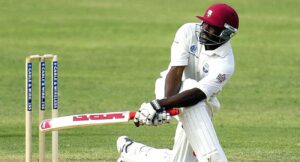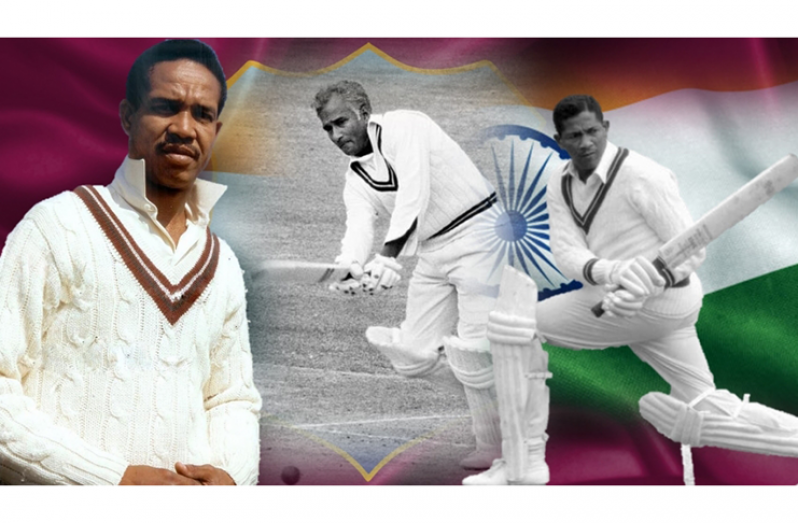By David Jackson
I have always been very passionate about cricket, especially West Indies cricket, from the tender age of about six years old. Both my father and mother were ardent supporters of the West Indies and due to their love and deep interest in the sport, I became drawn to it at a very early age.
The family often crowded around my father’s transistor radio to listen to the ball-by-ball commentary of each test match that involved the West Indies. The late Tony Cozier was our favourite commentator. His knowledge of the game and the clarity with which he described the action on the field of play may it seem as if you were actually seeing the cricket live.
The very first Test series I followed was the West Indies at home against Australia in 1965. West Indies won that Series 2-1. It was during that Series that certain West Indies cricketers became heroes of mine. I would hurry home from school or rush quickly to complete my chores on weekends to sit and listen to them perform.
My favourites back then were Conrad Hunte, Gary Sobers, Basil Butcher, Rohan Kanhai, Seymour Nurse, Wes Hall and Lance Gibbs. As I grew older my love for cricket intensified. By the early1970s, when I myself began representing my Primary School in cricket tournaments, the West Indies were beginning to establish themselves as a promising cricketing region.
In 1971 and 1972 respectively, the West Indies was host to the visiting Indian and New Zealand cricket teams. India won the 1971 Test Series 1-0. I remember that Series vividly if only because of an Indian batsman by the name of Sunil Gavaskar gave both me and also the entire West Indies
team nightmares. The gentleman seemed impossible to get dismissed and a Trinidadian Calypsonian penned and sang a calypso detailing that series.
The chorus of that calypso still often rings in my ears to this very day:
“It was Gavaskar, the real Master. Just like a wall we couldn’t out Gavaskar at all, not at all. You know the West Indies couldn’t out Gavaskar at all”.
The following year the West Indies had another hard-fought Home Test Series where all five Tests were drawn. Another batsman from the opposing team, Glenn Turner, was a thorn in the flesh of the West Indies. It was during that Series that I actually, finally witnessed, live and in person, my very first Test match. It was the Barbados 3rd Test, during which my fellow Vincentian and “Home Boy
Hero” Michael Findlay, top-scored for the West Indies with 44 as they were bundled out for 133 in their first innings.
Though New Zealand made 422 in their own first turn at bat the West Indies were able to draw the match thanks to Charlie Davis’ thrilling 183 and a Gary Sobers’ magnificent 142. Their 254 runs 6th wicket partnership enabled the West Indies to reach a total of 564/8 in their second innings.
In my early teen years, I remember running across to the Arnos Vale Playing Field which was only a short distance from where I grew up to watch our local Vincentian cricketers practice on the pitch that was just outside of the Oval. Those practice sessions were in preparation for the
Windward Islands and Regional Shell Shield tournaments. The latter subsequently became known as the Red Stripe Tournament.
I vividly remember that one occasion after my regular habit of fetching the cricket ball from the nearby river I was given an opportunity to bat. The pads could barely fit me
but I survived four deliveries from (if my memory serves me right) the late Sparrow Duncan who was then one of the top all-rounders of the National team. Although he had reduced his speed considerably I remember the ball cannoning into the side of my leg and I praised my lucky stars that the pad was on my left foot to partly cushion the blow. My mom applied a bag of ice when I returned home to take down the swelling. I did cherish that little injury though and it gave me the courage to go on to represent my school in cricket. From then on, I became more and more interested in listening to cricket and when television coverage started it interested me even more.
The radio series which disappointed me greatly but at the same time stirred my interest to see live coverage of cricket on television was the West Indies dreadful tour of Australia in 1975.West Indies were completely outplayed on that tour though they had a squad of very talented players including Gordon Greenidge, Roy Fredericks, Viv Richards, Alvin Kallicharran, Lawrence Rowe, Lance Gibbs Clive Lloyd, Andy Roberts and Michael Holding.
It pained me to listen to the sound thrashing our team received at the hands of the Australians but nothing could still prevent me from staying awake to listen to every ball bowled. The 2nd Test of that 1975-76 Series was the only joyous time for me in that entire tour. It was great to listen to the commentary when Roy Fredericks demolished the bowling attack of the Australians in that famous 169 knock in that 2nd test which was played at Perth. It was even more pleasing to me that he did it against a bowling attack that included the fearsome duo of Dennis Lillie and Jeff Thompson. I jumped and shouted so loudly that night that my parents were forced to reprimand me as some of my siblings were preparing for exams the following day.
West Indies went on to win that Test by an innings and 42 runs and Roy Fredericks became an instant hero of mine. It was however, the only victory for the West Indies on that entire tour.
Following that disastrous series which Australia won 5-1, the English probably felt that they would soundly defeat the West Indies on the West Indies tour to England in 1976, as evidenced by Tony Grieg’s ill-fated ‘grovel’ comment, just prior to the tour’s commencement. This apparently energized the West Indies and they comprehensively defeated England 3-0 in the Test Series.
By the late 1970s, by which time I’d already graduated from Secondary School, the West Indies were virtually recognized as the unofficial world champions. They had a super talented and destructive batting unit led by the ‘master blaster’ Viv Richards, magnificent fielders and a fearsome pace bowling attack, consisting of four world-renowned fast bowlers Andy Roberts, Michael Holding, Joel Garner and Colin Croft.
 The 1980s were wonderful times for us as West Indian fans. We watched our team win 27 Tests without defeat, as well as humiliating England by winning two 5-0 test series against them. We also saw the emergence of other great cricketers such as Brian Lara and Malcolm Marshall, Courtney Walsh and Shivnarine Chanderpaul.
The 1980s were wonderful times for us as West Indian fans. We watched our team win 27 Tests without defeat, as well as humiliating England by winning two 5-0 test series against them. We also saw the emergence of other great cricketers such as Brian Lara and Malcolm Marshall, Courtney Walsh and Shivnarine Chanderpaul.
It must also not be forgotten too that the West Indies were winners of the ODI World Cup in 1975 and 1979 respectively, and they became the T20 World Champions in 2012 and 2016. These were great achievements but sadly our cricket has deteriorated considerably.
Our batsmen are struggling with poor technique and the inability to occupy the crease for extended periods of time. They are generally lacking in temperament.
Inconsistency is now the hallmark of our modern batsmen, a far cry from those batsmen who once made the West Indies such a dominating force in the past. Our bowlers in recent times are showing great promise and one hopes that their effort and determination will instill help to motivate our batsmen to produce.
So as die-hard fans we hope to see great improvement and success for the West Indies going forward. Is it too late to believe that the West Indies can again rise to the top of world cricket? I believe!
St Vincent born David Jackson is a retired schoolteacher who now
still serves as an Adult Educator. He is also well known within St
Vincent as one of the island’s most popular playwrights!
